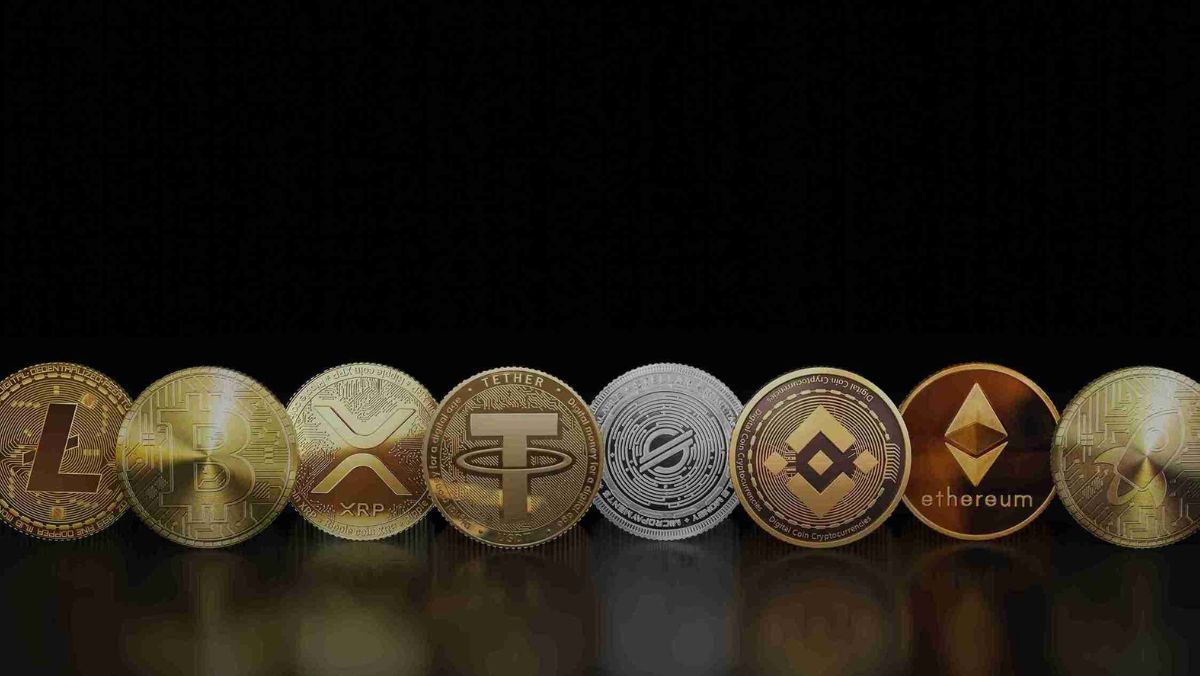Thursday Feb 1 2024 08:31

10 min

The cryptocurrency space has expanded dramatically beyond just Bitcoin. Numerous digital assets now comprise this dynamic landscape, including major tokens like Ethereum, Litecoin, and Ripple.
This raises the question – how exactly does Ripple compare to other top cryptocurrencies in areas like transaction speed, scalability, adoption, and growth potential?
Whether you’re already invested in crypto or just exploring different options, this guide will help you understand Ripple’s positioning among the cryptocurrency heavyweights.
Before diving into the comparisons, let’s start with a quick overview of Ripple and the major cryptocurrencies.
Ripple (XRP) is a digital currency and payment protocol created by Ripple Labs Inc. The protocol allows fast, seamless global transactions between banks and financial institutions.
The platform’s native cryptocurrency is XRP, which acts as a “bridge currency” to facilitate trades between different fiat currencies.
Bitcoin (BTC) was launched in 2009 and is considered the first decentralized cryptocurrency.
It runs on a public blockchain ledger and enables peer-to-peer transactions without intermediaries. Bitcoin is created through a process called mining.
Ethereum (ETH) is a public blockchain platform powered by smart contracts. It enables developers to create decentralized apps (dApps) and new cryptocurrencies on the Ethereum blockchain. The native cryptocurrency is called Ether.
Litecoin (LTC) is a peer-to-peer cryptocurrency launched in 2011. It is nearly identical to Bitcoin but offers faster transaction confirmations.
You might also like to read: Investing in Bitcoin vs Altcoins - What’s the Difference?
One of the biggest differences between Ripple and other cryptocurrencies is its intended use case.
Ripple is meant to enable fast, global financial transactions. It complements existing financial systems and acts as a settlement layer.
The Ripple protocol connects banks, payment providers, corporations, and digital asset exchanges via RippleNet to provide a frictionless experience.
Comparatively, cryptocurrencies like Bitcoin and Litecoin are designed as decentralized digital cash. Ethereum is a more generalized public blockchain that can support a variety of decentralized apps, from cryptocurrencies to games, NFTs, DeFi apps, and more.
In short, Ripple strives to improve global payments between established financial institutions. Other major cryptocurrencies have a more broad target audience and use cases.

The average transaction time is a significant difference between Ripple and other cryptos.
Ripple transactions settle in 3-5 seconds on average. This allows for fast remittances and payments, which is vital for financial institutions.
Bitcoin takes around 10 minutes per transaction, while Ethereum takes 1-2 minutes. Litecoin is faster than Bitcoin at about 2.5 minutes per transaction.
Ripple’s consensus protocol enables exceptionally fast transaction speeds. Unlike Bitcoin’s proof-of-work and Ethereum’s proof-of-stake, Ripple uses a consensus ledger to validate transactions.
For further information, read this article: The Role of Smart Contracts in Cryptocurrency
Scalability refers to a cryptocurrency’s ability to handle increased transaction volumes and grow its network size and operations.
Ripple is highly scalable. It handles 1,500 transactions per second and can be scaled up as needed. By comparison, Bitcoin handles five transactions per second and Ethereum around 15.
Ripple achieves high scalability through its consensus protocol. All nodes validate transactions on the network, allowing it to increase the number of processed transactions per second quickly.
An important factor to consider in cryptocurrencies is their level of decentralization, which refers to how distributed network control and governance are.
Critics argue that Ripple exhibits a higher degree of centralization than other cryptocurrencies. Ripple Labs exerts significant control over the Ripple ecosystem and owns over half the total XRP supply.
By comparison, Bitcoin and Litecoin are viewed as highly decentralized. No central foundation or authority owns most of the coins or makes decisions for the network. Mining is also more decentralized.
Ethereum falls in the middle, with the Ethereum Foundation overseeing development but no primary central ownership of coins. Decentralized apps built on Ethereum can also take varying approaches in their governance structures.
The level of decentralization is essential for those who view cryptocurrencies primarily as a decentralized alternative to fiat money.
From this, Ripple’s more centralized control could be seen as a disadvantage.

One area where Ripple clearly distinguishes itself is in real-world adoption, particularly among financial institutions.
Over 100 financial companies use Ripple’s payment protocol in some form for faster global transactions. Notable RippleNet members include American Express, MoneyGram, Santander, SBI Remit, and others.
Meanwhile, the number of companies that accept Bitcoin, Ethereum, and other cryptocurrencies directly is limited, though growing. Some major firms like Microsoft, AT&T, and Overstock.com accept Bitcoin for purchases.
Ethereum also has a strong enterprise interest in blockchain applications but less commercial use directly as a currency.
Consider giving this a look: Understanding the Current Ethereum Price UK
All cryptocurrencies carry volatility risks but offer plenty of upside potential.
Ripple has strong potential for adoption due to its partnerships with financial institutions. Its fast, low-cost transactions and ability to facilitate cross-border payments make it a preferred settlement platform, which can drive demand for XRP.
Bitcoin has the first-mover advantage and the most proven track record as an investment and store of value. Though scaling is a challenge, ongoing infrastructure development can support continued growth. The limited supply also helps drive up the BTC’s potential value.
Ethereum looks promising as it transitions to proof-of-stake to achieve better scalability, lower fees, and energy efficiency. If network congestion can be reduced, the ability to build apps and tokens on Ethereum will expand its use cases and value proposition.
Litecoin aims to build merchant acceptance and act as a common payment currency. But it faces stiffer competition from Bitcoin, its primary use case. Litecoin will likely continue as an alternative but with a more limited upside.
The cryptocurrency landscape continues to evolve, with Ripple emerging as a uniquely specialized token optimized for global payments.
While Bitcoin holds the greatest name recognition, and Ethereum provides a platform for decentralized apps, Ripple aims to improve how money moves around the world.
With its speed, scalability, and adoption by financial institutions, Ripple has strong potential to dominate the payments space. However, risks remain due to its more centralized control.
Ripple merits consideration alongside other primary tokens like Bitcoin and Ethereum for traders interested in diversifying into cryptocurrencies.
There is no definitive winner, as each cryptocurrency takes a different approach. But they all offer exciting potential.
Traders would be wise to research how Ripple fits into their portfolio and overall crypto investment strategy.
Learn and trade with markets.com: The ultimate trading community!
“When considering “CFDs” for trading and price predictions, remember that trading CFDs involves a significant risk and could result in capital loss. Past performance is not indicative of any future results. This information is provided for informative purposes only and should not be considered investment advice.”